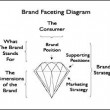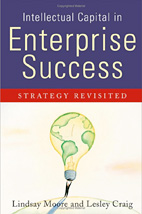During the 1990s, De Beers Consolidated Mines began the then seemingly unusual practice of “Branding” its diamonds. It began inscribing a small Brand Mark on its stones to differentiate its products within the commodity marketplace, and to ensure their worth against the inexorable declining value of non-oil commodities. The growing success of Brands, Branding and the strategies of Consumer Packaged Goods (CPG) Marketing are widely recognized within the global business community.
Brand Valuation Basics
Since the late 1990s, the need to establish dollar valuations for Intellectual Capital Assets has driven the development of a handful of brand valuation methods. Essentially, there are four approaches to valuing a Brand, and one or more of them may be applicable in any individual instance.
The Strategic Significance of Brands
Achieving brand relevance is a strategic task that, by its very nature, is never complete in the volatile markets of our rapidly changing societies. Each and every day more brands enter the marketplace. Ironically, as their numbers increase, there are fewer and fewer brands that really stand for anything significant in the minds of the public.
The State as a Brand
Brand gurus have long declared that all public entities and identities, and not just consumer packaged goods, are “Brands.” Today we see the truth of that assertion as we recognize the emergence of the “Brand-State.”
Branding Radioactive Waste
One of the biggest problems in branding is branding across cultures and on a global basis. However, even such a difficult undertaking as global branding is dwarfed by the magnitude of branding radioactive waste, not only across global cultures, but thousands of years into the future.
Brand Faceting and Marketing Strategy
Managing the growth and change of a Brand has always been difficult, requiring both art and wisdom. Most Brands are either over-managed and not allowed to change, or not managed at all and allowed to drift or even languish without strategic guidance or direction. The real art is to manage your Brand in such a way as to respect its natural expression. There is an art to it.
A Theme Park for Dracula?
A Theme Park for Dracula? Entertainment Branding. During the early 1990s, with the success of Walt Disney World in Florida, it seemed that theme parks were the brand building tool of choice for any Brand which could offer entertainment and rich media. Driven by the need to build a post-communist economy, Romania has moderated its previous rejection of Dracula as a vampire and shifted its focus to leveraging the Transylvanian myth for economic gain.



 As the knowledge-based economy expands, the companies and individuals that possess intangible intellectual assets, such as intellectual property, will need specialized expertise, strategic thinking, legal experience, and the wisdom necessary to manage intellectual assets.
As the knowledge-based economy expands, the companies and individuals that possess intangible intellectual assets, such as intellectual property, will need specialized expertise, strategic thinking, legal experience, and the wisdom necessary to manage intellectual assets.